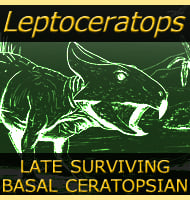In Depth
An otherwise unassuming little reptilomorph, the presence of Tseajaia in the earlier half of the Permian period is at least proof that some reptilomorphs made it this far in Earth’s history. The teeth of Tseajaia are notably blunt which has led to the idea that Tseajaia may have been slightly if not exclusively herbivorous. This is not that unusual as even though some reptilomorphs like Seymouria were carnivorous, others like Diadectes were herbivorous.
Further Reading
- Vertebrates from the Organ Rock Shale of the Cutler Group, Permian of Monument Valley and Vicinity, Utah and Arizona. - Journal of Paleontology, v. 38, n. 3, p. 567-583.- P. P. Vaughn - 1964. - The morphology and phylogenetic relationships of the Lower Permian tetrapod Tseajaia campi Vaughn (Amphibia: Seymouriamorpha). - University of California Publications in Geological Sciences, vol 98, pp 1-72. - J. L. Moss - 1972.










